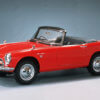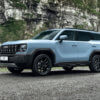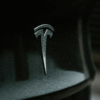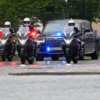The American non-profit organization Consumer Reports conducted a large test drive of 22 electric models. In summer conditions, at air temperatures from 20°C to 32°C, electric cars were tested for maximum autonomy: driving along a highway at a speed of 70 miles per hour (113 km/h) in economy mode continued until a complete stop, and the total mileage was calculated using GPS -tracker.
The test methodology was the same: regenerative braking was set to minimum, climate control was adjusted to 22°C, with only the driver in the car. Weather conditions changed slightly: the ambient temperature ranged from 20°C to 32°C, but all races were carried out in dry weather.
Of the 22 vehicles, almost half of the participants exceeded the values declared by the manufacturers according to the EPA (American Environmental Protection Agency) methodology. The leaders were the Mercedes-Benz EQE 350 4Matic (+116 km from the promised 418 km), BMW i4 M50 (+75 km from the promised 436 km) and BMW iX xDrive 50 (+74 km from the promised 521 km).
Outsiders are Tesla Model S Long Range (62 km short of the declared 652 km), Lucid Air Touring (-64 km from the declared 618 km) and Ford F-150 Lightning Extended Range (-80 km from the declared 515 km).
Electric cars Audi Q4 e-Tron, Genesis GV60 and GV70, Hyundai Ioniq 5, Kia EV6 and Niro, Lexus RZ 450e, Nissan Ariya, Subaru Solterra, Rivian R1T and Volkswagen ID.4 showed results within the measurement errors. The difference between the actual and declared power reserve did not exceed 30 kilometers.
The Ford Mustang Mach-E (+47 km), Mercedes-Benz EQE SUV 350 4Matic (+50 km), Mercedes-Benz EQS 580 4Matic (+64 km) and Mercedes-Benz EQS SUV 450 4Matic (+47) performed better km).
Automakers did not comment on the Consumer Reports tests. although experts made inquiries to the American branches of all brands participating in the tests. And two years ago, popular electric cars were tested using a similar method in severe frost.
New Chinese electric cars







